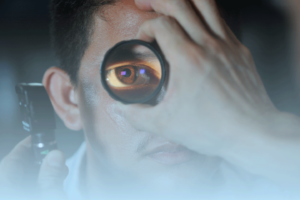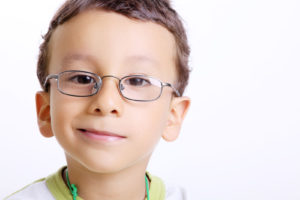Reading is a very complex process that requires many areas of the brain to work in perfect harmony to allow us as human beings to turn these small shapes we call letters and words into meaning. It is no wonder that many children and even some adults struggle with the process of reading. It also makes sense that the processing and coordination of our visual systems which plays a critical role in the reading can often interfere with this basic and arguably most critical aspect of our daily lives.
From a vision standpoint, reading requires 4 basic areas of function.
1. Oculomotor
When we read, we must move our eyes from word to word to word. These movements our eyes make are some of the smallest and most precise movements of the human body. We assume that these movements develop appropriately in children, but often they do not or are at least delayed. If our eye movements are not accurate, then children will often skip words (especially the small words like “to” and “the” because they are harder for the eyes to land on) or lines when reading. It can also significantly impact handwriting, copying from the board, and cause slower and more labored reading. To learn more read our page on Oculomotor Dysfunction.
1. Accommodation
Inside our eyes is a small lens called the intraocular lens that is a focusing lens similar to a lens on a camera. Its role is to keep our world clear. Again, we assume that this development must just happen for everyone, but as with everything learned, children can struggle with this development. The result can be words that blur in and out when reading, even if the child has 20/20 vision and does not need a pair of glasses. They can also struggle from headaches, tired eyes, as the lenses of the eyes work to try and keep everything in focus. Learn more about Accommodative Dysfunction here.
1. Binocularity
We have two eyes that must work in perfect coordination for our eyes to focus on the page when we read. If both eyes are not pointed at the same spot on the page, then we will see a doubling or overlapping of the words when we read. If the eyes are not aligned on the page, it can also make the words appear to move or float on the page as well. Obviously this can make it very difficult to read, let alone learn how to read. Some children really struggle at getting both eyes to point together on the page when they read. This can cause the words to double or move on the page as mentioned, but it can also cause headaches and eye strain as the child struggles to get the eyes to focus together. Our website provides more detailed information about one of these types of conditions on our convergence insufficiency page.
1. Visual Perception
Our brains must also process and understand all of the visual information we see. It is possible, however, for the brain to struggle to understand our visual world and in turn we can confuse what we are seeing. This is essentially what happens any time you’ve looked at an optical illusion. We sometimes assume that babies see in the same way that we see, but the reality is that much of how we see or how we process all of the visual information we see happens in early childhood.
For example, at an early age we have to learn a concept called form constancy. That is the ability to look at an object, for example a cup, and know it is a cup no matter what direction or orientation it is facing. This means we learn to name it as a cup no matter which direction it is facing. However, when we learn our letters, the letter “b” and “d” are the exact same object facing different directions. Everything in our visual development up to that time tells us that these two objects should have the same name, but instead we learn that direction matters. This is visual perceptual development in action and is why we expect kindergarteners to make letter reversals.
Unfortunately, as with all areas of development, there can be delays. Particularly, if a child is struggling to track or focus or focus their eyes well, it can affect this visual perceptual development. So, children may continue to struggle with letter reversals or other areas of visual perception like visual discrimination and visual memory; the ability to see small differences between two objects or remember what they have seen, respectively.
The problem is that even though children can have words blurring and doubling on the page when they read, they often don’t know how to tell us this or think it is just normal. As parents, we often do not know what questions to ask our children about their vision and assume that if they pass the school vision screening or the vision screening at the pediatricians office then their vision must be okay. In other words, we assume that if our children can read small letters at 20 ft one eye at a time, then they must have the vision needed to read. However, while these screenings are important to catch eye disease, they do little to check how our children’s eyes function for 5-6 hours a day with close detailed work.
Difficulties in the function and coordination of our vision are not rare. Some studies show that as many as 1 in 4 children have a vision problem that is impacting their learning. Other studies show that over 50% of those children in special education struggle with vision problems. If you suspect you or your child may be struggling with any of these vision problems, please schedule an appointment with us here.




